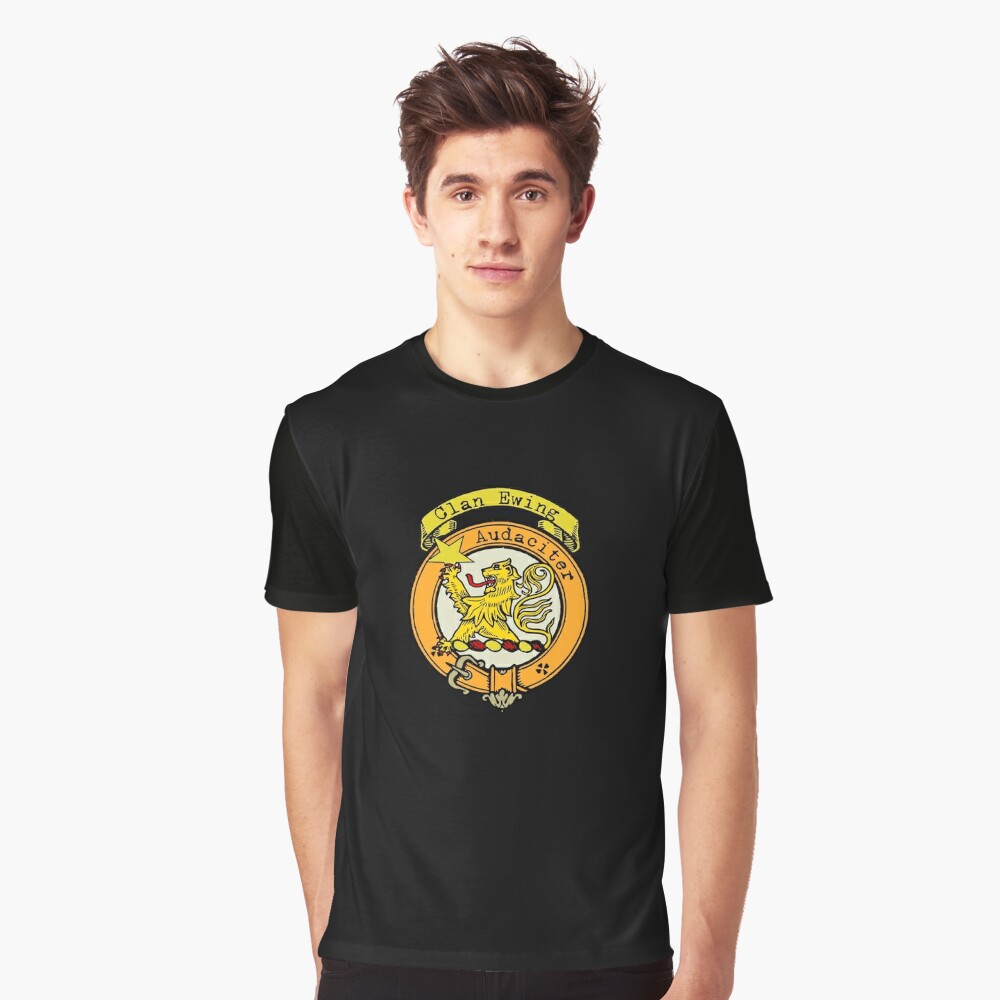Clan Ewing Crest
|
|
CREST: A demi-lion rampant with a star in its dexter (or right) paw MOTTO: Audaciter TRANSLATION: Boldly VARIATIONS: N/A |
| Clan Ewing’s roots can be traced back to medieval times, with Clan Ewen of Otter as its precursor. Descended from the eleventh-century prince Anrothan O’Neill, the clan shares kinship with notable names like MacLachlans, Lamonts, MacQueens, and MacSweens. However, what sets the Ewings apart is their unique path in history.
Recent investigations into an early clan genealogy, MS1467, reveal that the original Ewen after whom the clan is named was Ewen mac Duncan, a thirteenth-century Argyll baron. This Ewen was likely the grandson of Farquhar mac Dunsleve. Ewen’s descendants owned lands between Otter Ferry and Kilfinan, though the barony of Otter eventually passed to the Campbells. |
|
 |
|
| Purchase @ Redbubble Purchase @ Amazon.com Purchase @ Amazon.co.uk |
|
| The seventeenth century brought significant challenges to the Ewing clan. Religious persecution and political turmoil led to changes in allegiances and locations. During the mid-1600s, many Protestant clans faced persecution in Scotland. It was during this period that Clan Ewing found themselves at the crossroads of history.
According to clan tradition, six brothers and their chieftain engaged in insurrection in 1685, only to be defeated and outlawed. The brothers sought refuge, migrating from their ancestral lands to the Isle of Bute and later settling near Coleraine, County Londonderry, in Northern Ireland. This migration marked a pivotal moment, shaping the destiny of the Ewing clan. The Battle of the Boyne in 1690, a decisive event in Irish history, saw Clan Ewing members participating on the side of William of Orange against King James II. Their support played a role in William’s victory, resulting in his establishment of rule alongside Mary. One notable figure from Clan Ewing was Captain Findley Ewing, who distinguished himself during the Battle of the Boyne. His bravery earned him a silver sword from King William, a testament to his courage in the face of adversity. Clan Ewing’s legacy extends beyond the annals of history. Today, the clan’s descendants carry forward its rich heritage. Many Ewings still reside in the lands of their ancestors in Argyll and the Lennox, while others are scattered across the globe. The variations in the Ewing name, from Ewan to Ewins, further exemplify the diversity of this clan’s influence. The heraldic elements of the Ewing coat of arms, with its chevron, banner, and canton, stand as symbols of the clan’s history and identity. |
|
Citations:
|
|
